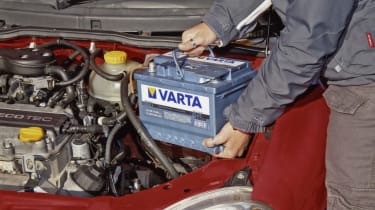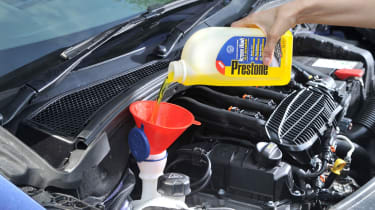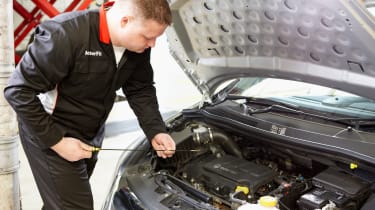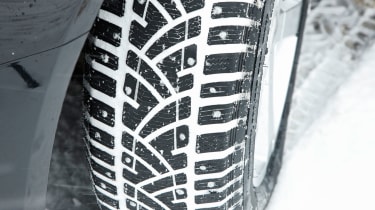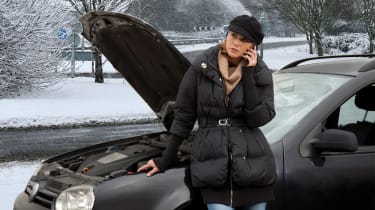Winter car checklist: preparing your car for winter
Cold weather presents some of the most challenging driving conditions. Read on for our winter car maintenance checklist
If your car has any developing faults, winter is the time when they’ll be exposed. Snow and ice generates cold and damp, which can be very bad news for cars. Road salt and grime can also cause problems, and can quicken the appearance of rust if left unchecked for long periods of time.
Fortunately, there are a number of simple checks you can do yourself to ensure your car remains free from faults – and on the road – all through the winter. We’ve outlined the most important ones below, although there are no shortage of garages, fast-fit centres, car accessory shops and main dealers offering winter car services who can do this for you.
Best 4x4s and SUVs of this year
Winter car maintenance checklist
Most of these winter car checks aren’t that different from the checks you should make throughout the year, but there are a few you should pay special attention to. Many of these are really simple to do, so don’t think we’re excluding you if you’ve got little mechanical knowledge or interest.
If your car is due to be serviced as winter approaches, many of these will be looked at, so you don’t have to. But don’t pay for an extra service if you don’t need one – getting problems rectified as you find them will be far cheaper.
Here are the winter checks you must do:1. Check your car battery
5. Check your lights are working
8. Look through our must-have winter car equipment list
Check your car battery
If your battery isn’t in tip-top condition, the cold and damp could kill it – particularly if you don’t drive the car very often or for long distances. There’s little worse than the mechanical groan from a slurring starter caused by a car battery in its death throes. Should the car fail to start, check our guide to see if it’s the battery that’s the problem or something else.
If the car is taking longer than usual to start, you may need a new battery. If your car has stop-start technology and it’s not working very often, this is another sign that your battery might be on its way out.
It’s possible to check the condition of your own car battery if you have the correct equipment, but it’s far easier to ask a specialist at your local garage or car battery retailer. If you can drive your car, your local main dealer or car spares shop will be able to fit it for you too. Although you can jump start a car, or remove it to charge indoors, it’s easier to get the battery checked and replaced while the car is able to start under its own power.
Car battery prices vary depending on the size, type, brand and where you buy them. The cheapest start at around £30 from stockists such as Euro Car Parts, although you’ll have to fit it yourself. Retailers like Halfords offer similarly priced car batteries, and will charge £15 or more to fit it for you.
If you’re going down the self-fit route, it’s essential you know the right battery for your car, as there are dozens of combinations. Make sure you read the owner’s manual, and take care when handling lead acid car batteries because they’re as heavy as they sound. Find out how to change a car battery.
Check antifreeze
Antifreeze, as its name suggests, stops the water in the engine’s cooling system from freezing. To test the effectiveness of your antifreeze, you’ll need an antifreeze tester, which cost about £5. To use it, unscrew the coolant reservoir cap under the bonnet after making sure the engine is cold. You’ll usually find the coolant reservoir next to the radiator at the front of the engine, but check your car’s handbook for confirmation.
Lower the tube into the coolant and squeeze the rubber bulb on the end to suck some antifreeze inside the tester. You can then read the freezing point of the antifreeze using the scale inside the tester. Put the antifreeze back in the car’s system and replace the cap.
To find out how to top up your antifreeze, see our top 10 DIY maintenance tips.
Check screen wash
Wintry roads are frequently damp, meaning you’ll spend lots of time using your windscreen wipers. There’s a high risk of them smearing grime across the windscreen if your screen wash bottle is empty.
To ensure this doesn’t happen, open the windscreen washer bottle under the bonnet and fill it with screen wash. You can buy ready-mixed or concentrated screen wash (you’ll need to mix the latter with water).
Screen wash has a lower freezing temperature than water alone, meaning you shouldn’t end up with frozen washer jets. All screen washes are marked with the lowest temperature they’re suitable for and you’ll often need to make the mixture stronger for winter, as this helps to prevent the solution from freezing.
Check wiper blades
If your windscreen wipers are old, have perished rubber blades or are worn, they won’t work effectively, meaning it can be hard to see the road ahead. If they’re smearing or failing to clear the front or rear windscreens effectively, they’ll need replacing. They could also cause your car to fail its MoT test.
It’s a five minute job to change your windscreen wipers on most cars, but ensure you buy the right ones. Most wiper blade packaging has a list of compatible cars, but if you’re in doubt ask the shop assistant or speak to your car’s main dealer.
Check your lights are working
It’s dark for longer periods in winter, and you’re more likely to encounter rain, sleet and snow. That means you’ll be more reliant on your lights than usual.
Firstly, make sure your front and rear lights, plus your side indicators are clean – a quick wipe will remove most of the grime and make it easier for you to see and be seen.
Secondly, check they all work. That means operating the headlights in their sidelight, dipped and main beam functions, and making sure both your front fog lights are working too, if you have them.
Rear lights are harder to check, so you may need a friend to lend a hand. Ensure your red tail-lights are working, along with your brake lights (all three of them if you have a centrally-mounted light), your rear fog lights and your reversing lights. It’s worth noting that some cars only have one reverse and one rear foglight.
Finally, check your rear numberplate light is working along with your indicators front, back and on the sides of the car.
If any of your lights aren’t functioning, the chances are you’ve got a faulty bulb. Read our guide to find out how to change a car headlight bulb.
If you need to replace a headlight bulb, make sure to check our guide to the best car headlight bulbs.
Tyre tread
As your tyres are the only part of the car in contact with the road, it’s important to check they’re in good, safe condition – and vital in winter. Tyre tread is key here, because the grooves in your tyres are responsible for clearing water and snow to maximise grip.
When tyre tread wears, it’s less able to clear that water, increasing stopping distances and making it easier to lose control of the car.
It’s a legal requirement to have at least 1.6mm of tread, but because the amount of grip provided diminishes quickly, you should consider replacing them when they reach 3mm.
You can use a tread depth gauge, or you can use a 20p coin – the outer band is 1.6mm, so if you insert it into the tyre’s tread and can see any of the band, it’s time to replace the tyre. Buy the best tyres you can afford, but avoid part worn tyres as they can be a false economy. It’s impossible to tell what condition they’re really in, so they can also be dangerous.
Professional winter car checks
If you haven't got the time to prepare your car for winter, then you can ask an expert to do it for you. Many main dealers and high street car spares shops can do this, and shouldn’t cost more than a few pounds. Some even offer free winter car checks although, as you might expect, the free ones are less thorough than the ones you need to pay for.
Winter tyres
If you drive frequently in winter, then consider buying a set of winter tyres. They offer exceptional grip when the temperature drops below seven degrees, and in snow and ice. They’re not cheap, but well worth the investment for the additional safety they bring. You’ll also need somewhere to store them be it in your garage or perhaps your local tyre shop, but an added bonus is that your normal tyres won’t wear out so quickly as they’re only being used for half the year. Read our complete guide to winter tyres for all the information you need.
Winter car equipment
Carrying an emergency kit with you at all times through the winter might seem a bit extreme – but if you ever find yourself stranded you’ll be glad of it. We recommend:
- Mobile phone and charger- Hazard warning triangle- High-visibility vest- First-aid kit- De-icer and scraper- Shovel- Tow rope- Wellington boots- Torch- Warm clothes- Food and drink
A decent set of car mats will not only protect your car’s carpets from wet or muddy feet, but can be wedged under the driven wheels to get you moving should you get really stuck in the snow. An old blanket can be used in this situation, too.
Driving in winter tips
Driving in winter can be tricky, but the golden rule is to accelerate, brake and steer gently. Do any of these things too quickly, and you may end up skidding.
There are plenty of other tips in our driving in winter feature.
If you’re serious about getting the best car for driving in winter, check out our best winter cars guide.
Most Popular
Tips & advice

Car dashboard warning lights: what does each symbol mean?

Electric car charging stations: public networks, charger types, apps and maps



